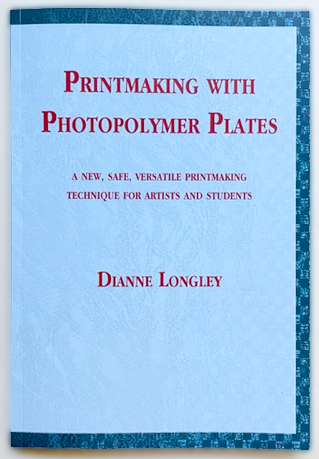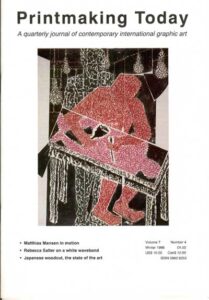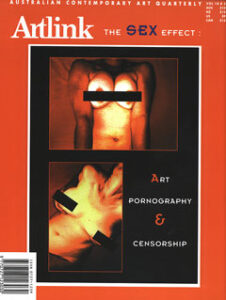Photopolymer Plate Printmaking:
a multifaceted approach
If you are interested in being advised when Dianne’s new book is available, please provide your details here:

A small reprint of ‘Printmaking with Photopolymer Plates’ by Dianne Longley is now available for purchase.
Unfortunately increases in printing costs and Australia Post charges have increased the cost of the book.
For reviews of this book scroll down to the end of this page.
I am currently working on a totally new book which will be available in early 2024. ‘Photopolymer Plate Printmaking: a multifaceted approach’ is currently taking shape. It will give clear step by step guidance for a diverse range of photopolymer processes (most not included in the 1998 book) and will also have a section comprised of prints made by artists in collaboration with Dianne at Agave Print Studio.
Some of the techniques in the new book include:
hand-drawn film intaglio
direct-to-plate digital intaglio
using random dot screens
intaglio and hand-drawn chine collé and inkjet chine collé
combination metal plate and photopolymer tonal plates
combination drypoint plate and photopolymer tonal plates
relief prints/combination relief/intaglio plates
duotone printing
CMYK four-plate prints
embossing/relief embossing
letterpress text and image
letterpress foiling
letterpress type and photopolymer letterpress
In my new book I am collaborating with print artists from NSW, Victoria and South Australia. This will be an exciting section, with the print collaborations demonstrating the diversity of how photopolymer plates can be used.
Collaborating artists and techniques include:
Margaret Ambridge – tonal drawing
Susan Baren – a la poupée inking and printing
Marian Crawford – letterpress image and metal type
Silvi Glattauer – duotone direct to plate
Judy Horacek – relief embossing
Hyun Ju Kim – hand-coloured chine collé with hand-drawn image on photopolymer plates
Damon Kowarsky – combining traditional copper plate intaglio with tonal photopolymer
Craigh Marsden – white on black
Seraphina Martin – combination drypoint, tonal background plate
Tricia Ross – inkjet chine collé
Olga Sankey – relief/intaglio photopolymer with inking variations
Gemma Thorne – letterpress visual poetry
Ritva Voutila – combination of digital and hand-drawn image
There will also be an emphasis on safer cleaning up, and lots of studio tips.
If you are interested in being advised when Dianne’s new book is available, please provide your details here:
‘Printmaking with Photopolymer Plates’ by Dianne Longley revealed the unique possibilities offered by a new printmaking medium and was designed to be used by artists, art students and art teachers. Photopolymer printmaking is printing from photosensitive plates that have been exposed to UV light and developed using tap water, no chemicals are required. The process is clean, easy and safe.
The book described photopolymer plates and their uses, detailed the process illustrating each step and also listed support information such as materials and suppliers (mainly Australian).
The book illustrated a diverse range of applications for photopolymer printmaking and the captions supplied information about how the images were produced.
‘Printmaking with Photopolymer Plates’ was reprinted in 1998, 2003 and 2010 with only minor changes including the updating of suppliers where necessary. 5000 copies were sold in Australia and overseas.
A new book on photopolymer printmaking is currently in progress.

Photopolymer plates – the future?
With the massive growth in the packaging industry over the last 20 years there has been a commensurate expansion in the Flexographic process used originally for carton printing. This is primarily the use of a flexible plastic photopolymeric plate, that can be washed after exposure to produce a relief photographic printing plate.
Until the last few years this process and its growth have been largely ignored by artists. Fine press printers were the first to realize its potential, using metal-backed plates as a replacement for hand-set type. More recently, the plastic-backed variety of plate has been used for intaglio, both in the USA and more extensively in Scandinavia. Despite the rapid spread around the world, few have yet explored the full potential of this fascinating medium.
This book is the first practical hand-book for artists that deals with both aspects of relief and intaglio use for Flexography plates. It is a simple straightforward account of the different types of plate and their uses, from preparing drawings, through exposure, to the characteristics of the various plate forms and the best methods of washing them out and printing.
Well laid out with good photographic illustrations, this book is recommended for any beginner to this form of printing. Perseverance may be necessary to obtain the plates in small quantities in Europe. Having spent the last 12 months evaluating all forms of these plates for artists’ use, I am sure that Flexographic plates have a bright future in printmaking.
Steve Hoskins
Illumination Press
112 pp b&w illustrations, 13 colour ISBN 0 646 27392 2 199

As like a number of young printmakers in the late 1970s I explored print traditions, played with new technologies and became heavily involved in the bravado of the medium, but health and safety concerns were far from our minds. Many evenings we left the studio, worn out and tired from a long day of technique and process often only vaguely commenting on fumes and chemicals and their effect on us. We thought a run or a long walk would clear the air and improve our health.
One evening I left the studio to prepare dinner for some friends and while gazing at cheese in the supermarket heard one of the staff ask “What is that horrible smell?”. I realised it was me as I carried toxic fumes of my day around with me. Over the 1980s the artists who taught us seemed to suffer a range of acute health problems and we began to wonder about the effects of the chemicals and other substances on us. Many abandoned printmaking for safety and creativity.
It was therefore with interest that I picked up Dianne Longley’s Printmaking with Photopolymer Plates. Its subtitle A new, safe, versatile printmaking technique for artists and students caught my eye immediately. In this publication Longley has used her skills as printmaker, her environmental concerns and wide teaching experience to produce a book on a printmaking process that can be used safely and creatively.
Photopolymer printmaking involves the use of photosensitive plates that are exposed to sunlight and developed using water. The process is clean, easy and safe to use. It also look fun and gives many opportunities for individual practitioners to explore their ideas. Longley’s book covers the traditions of printmaking, examines this process in great detail and contains comprehensive notes on technique. The technical specifications of processing, a glossary, bibliography and suppliers are all included, as is a useful index. The health and safety section highlights Longley’s interest in keeping the environmental concerns an important part of the focus.
The book has a key element of drawing upon the experience and work of practising artists working in a community framework and this enables the process to come to life. It also enhances printmaking’s continued relevance and role within art making. In a new safer environment the traditions, techniques and approaches of printmaking are well placed to make use of digital technologies. This provides artist of all ages with the potential to represent a wide range of images and ideas. Not only does the photopolymer plate process seem to offer this in a safe environment, but books like Longley’s form an important part in educating us to its uses.
Colin Simpson
Visual arts writer and teacher living in Melbourne. Art critic for the Bulletin and co-author of the Art Now series published by McGraw-Hill Book company.

Does the world need a new method of printmaking? The answer is a resounding yes from artists in the cities and Aboriginal artists in remote areas, from school students and printmakers of every hue and disposition. Photopolymer or solarplate printmaking is much more environmentally and personally friendly than most traditional means of printmaking. Photopolymer plates were used in industry for environmental reasons long before artists began to use them for handmade works. Di Longley new book Printmaking with Photopolymer plates is an excellent manual based on her extensive experience with the process. It covers the process in great detail and is clear and well-illustrated. The fascinating potential of this new medium lies within the fact that photographic media can be as easily transferred to the plates as hand drawn marks.
Stephanie Radok
Artist, curator, art writer and critic in Adelaide.
a multifaceted approach
If you are interested in being advised when Dianne’s new book is available, please provide your details here: